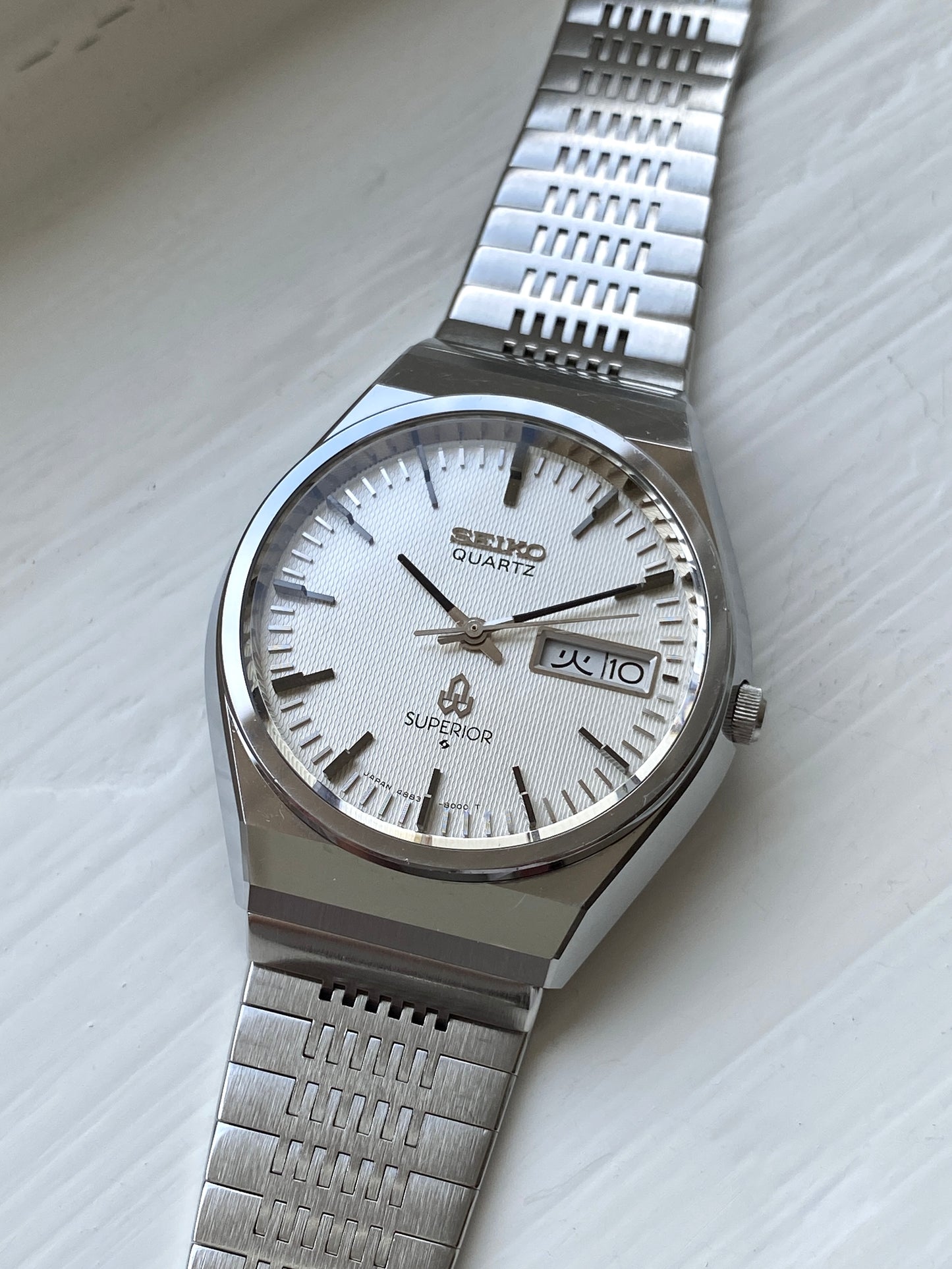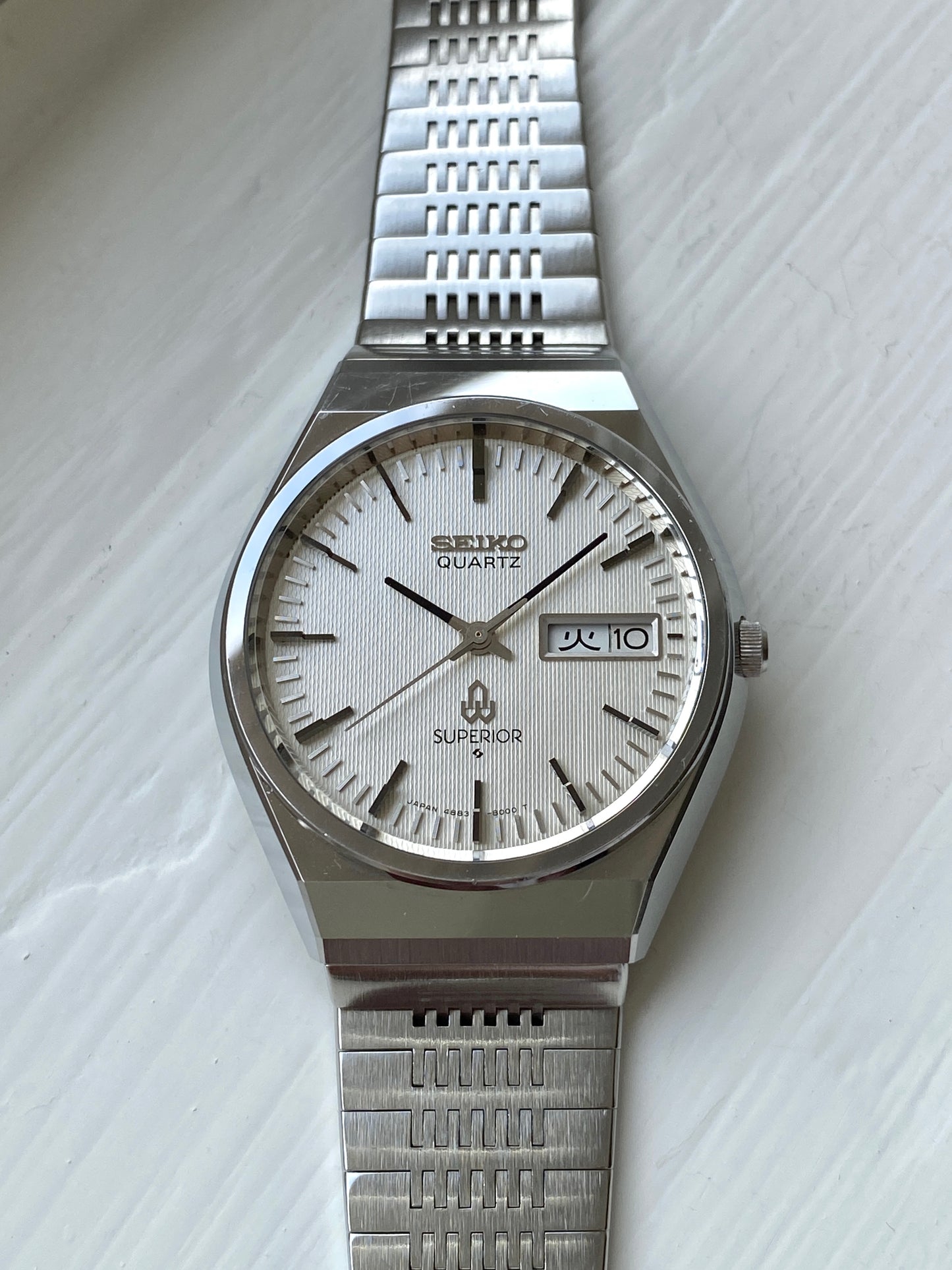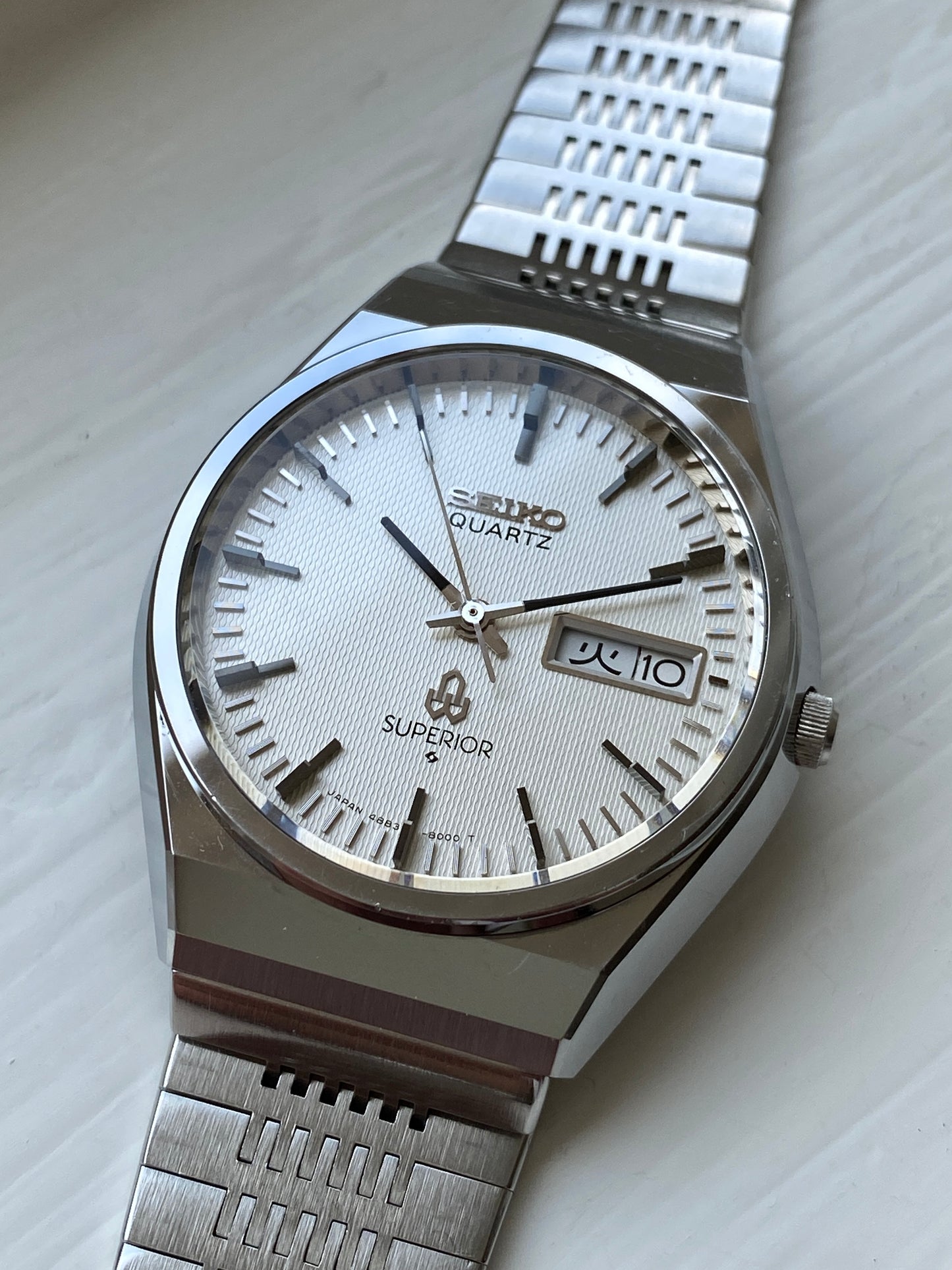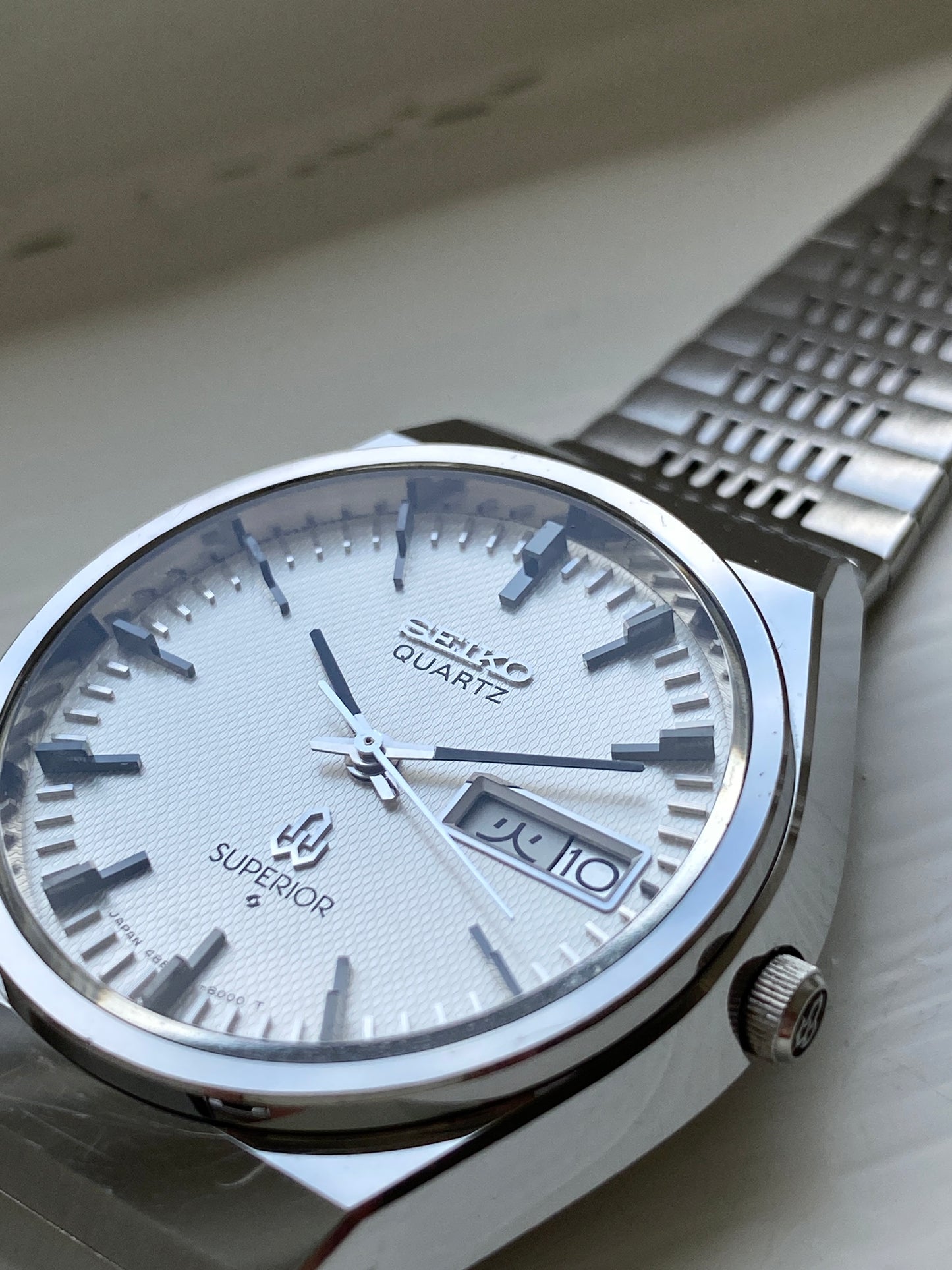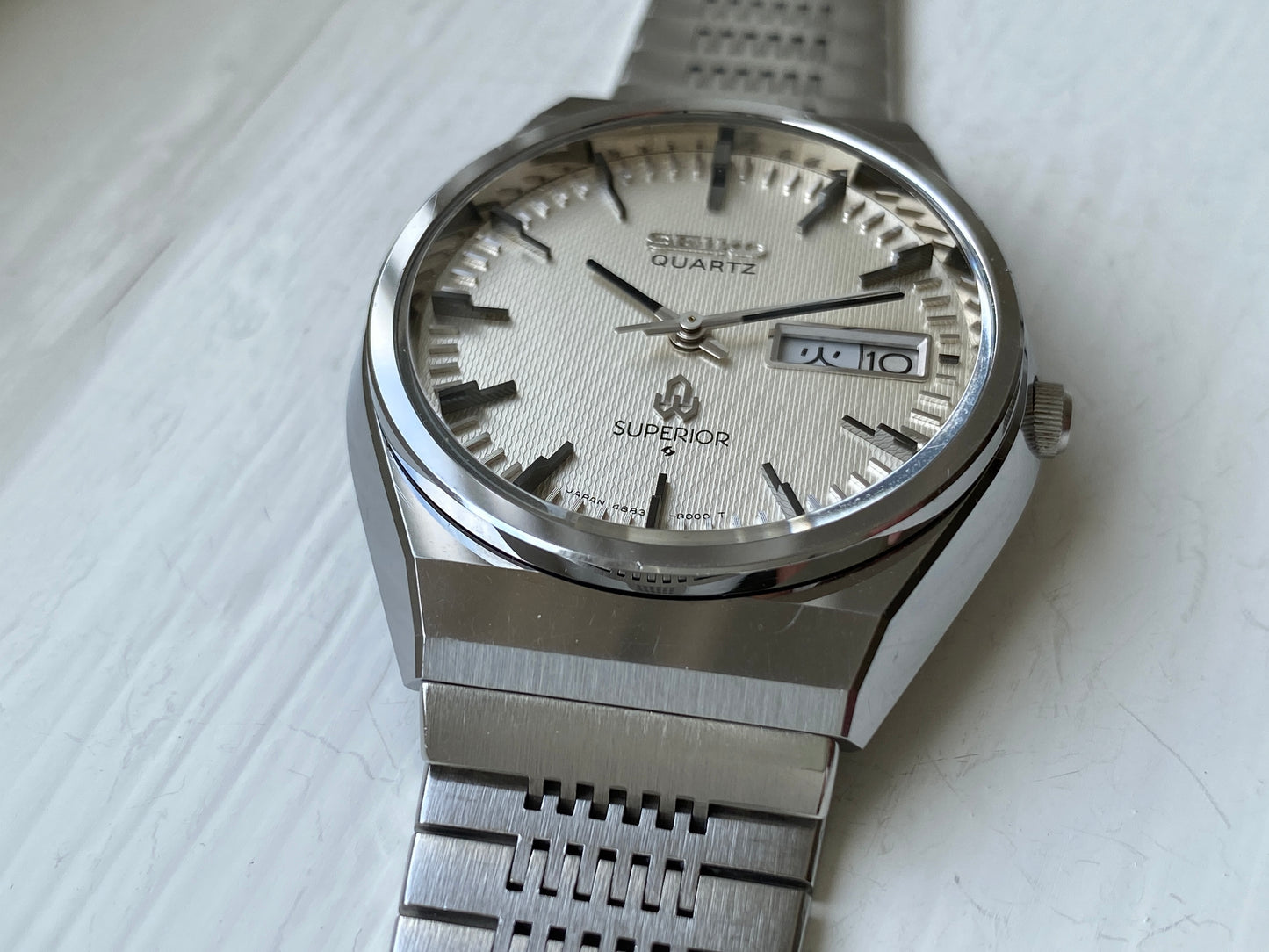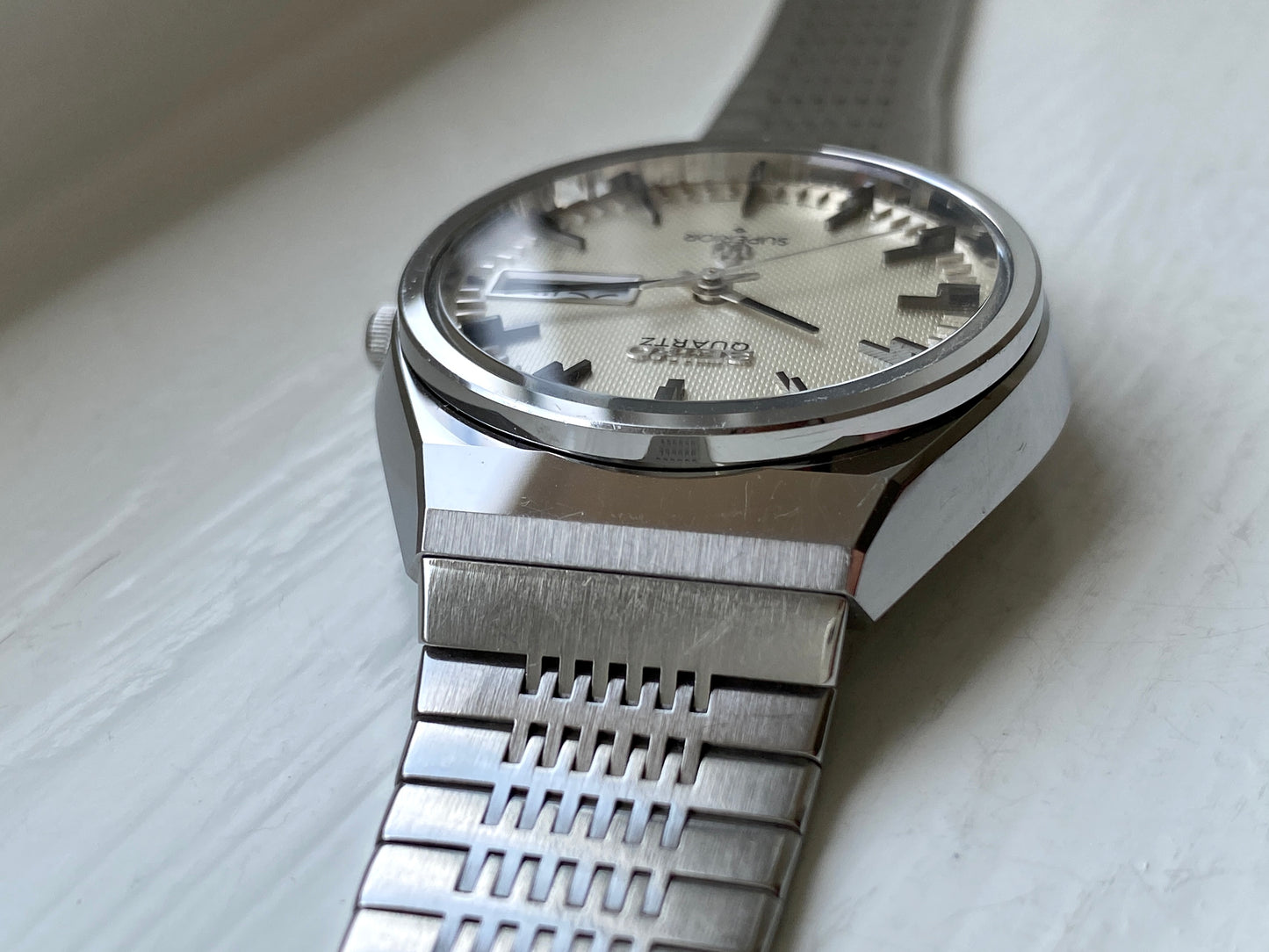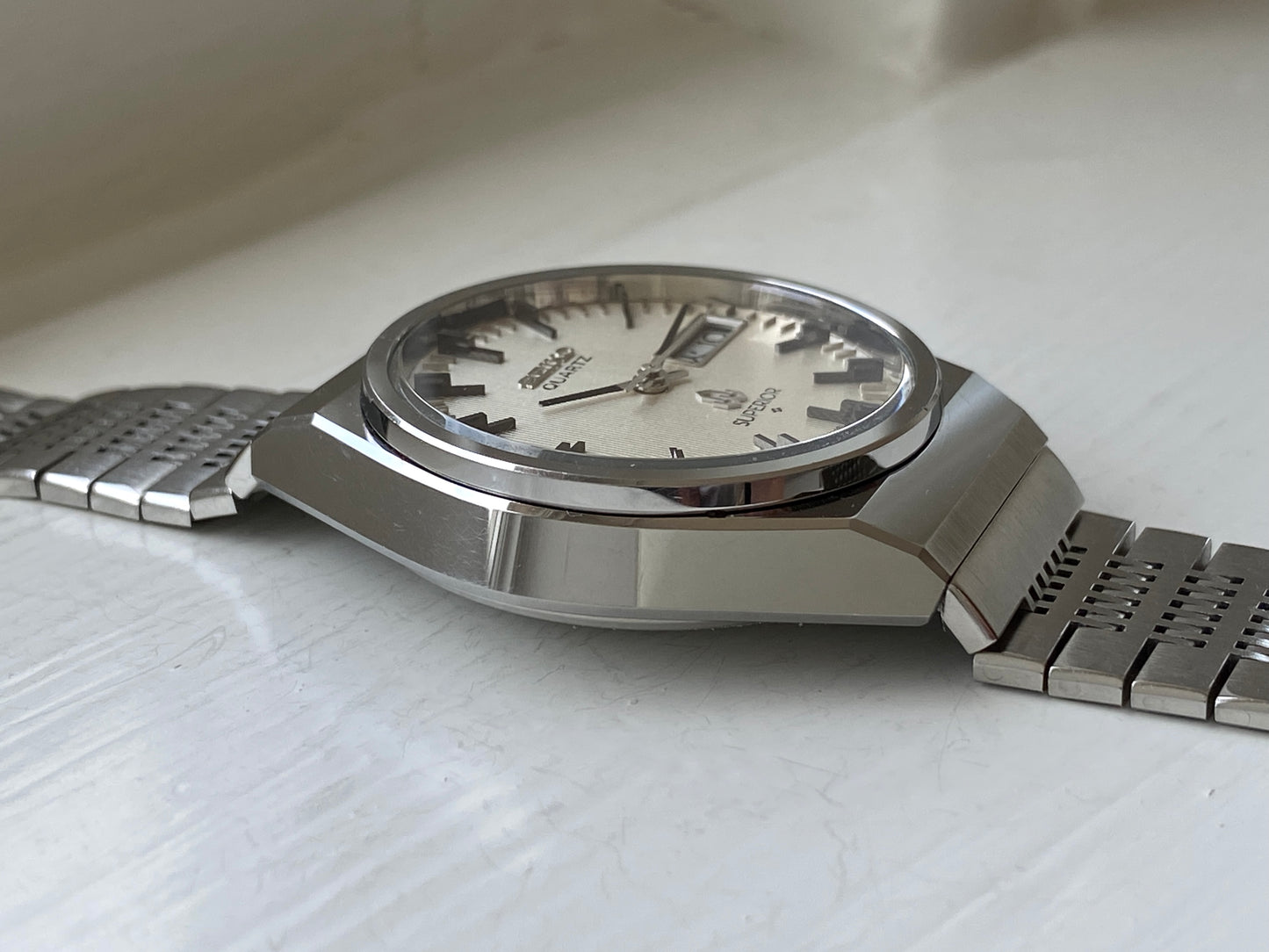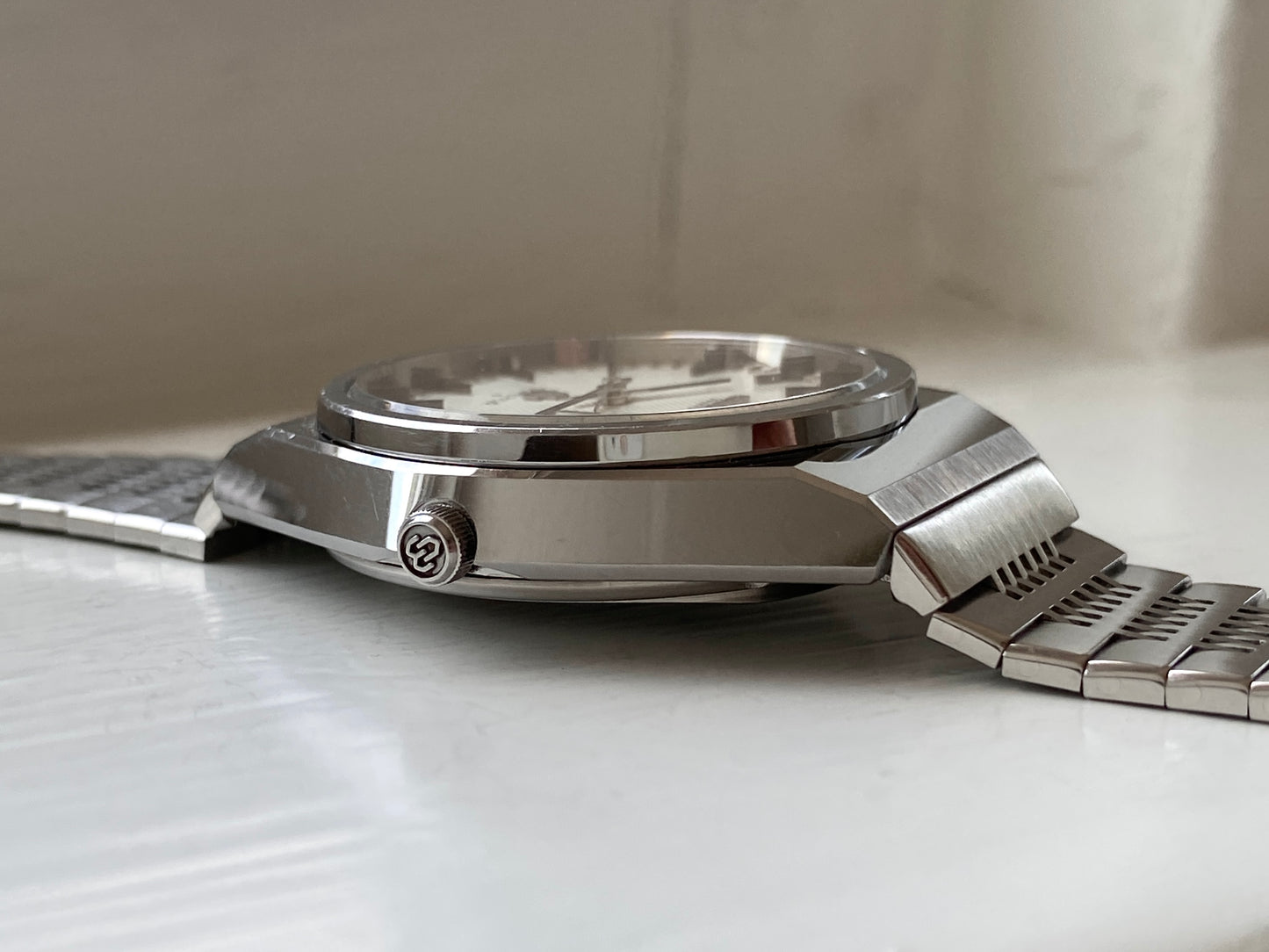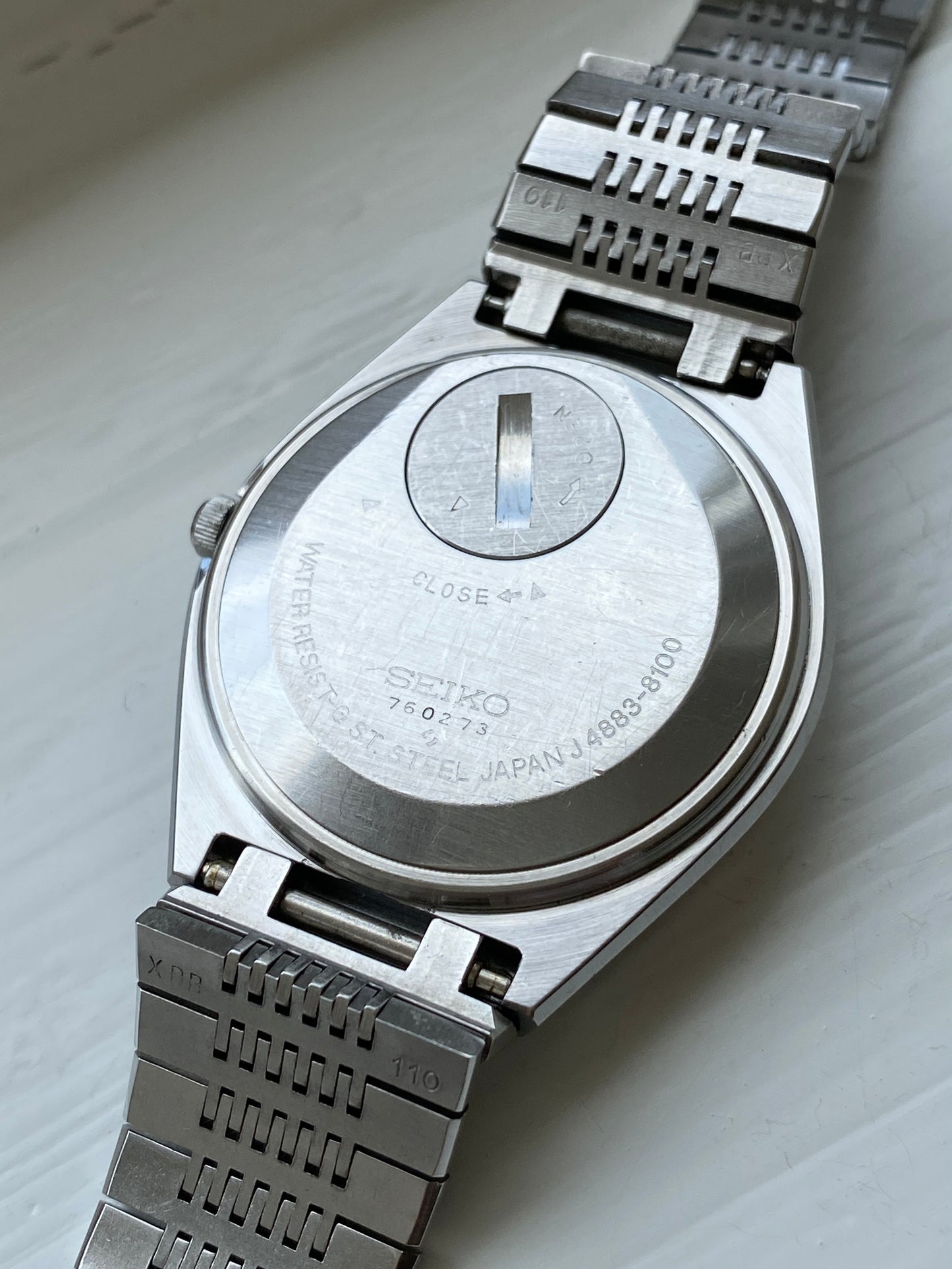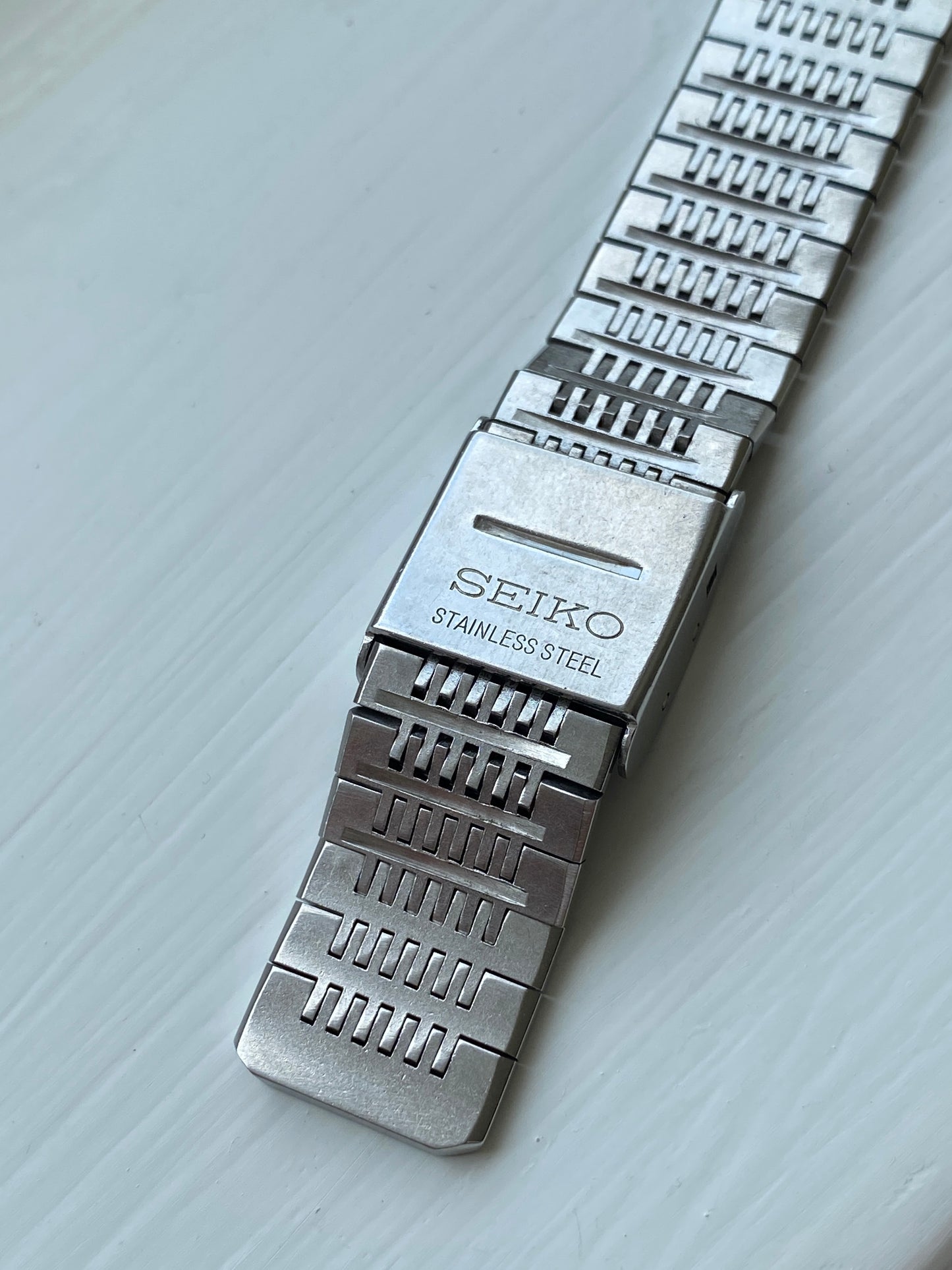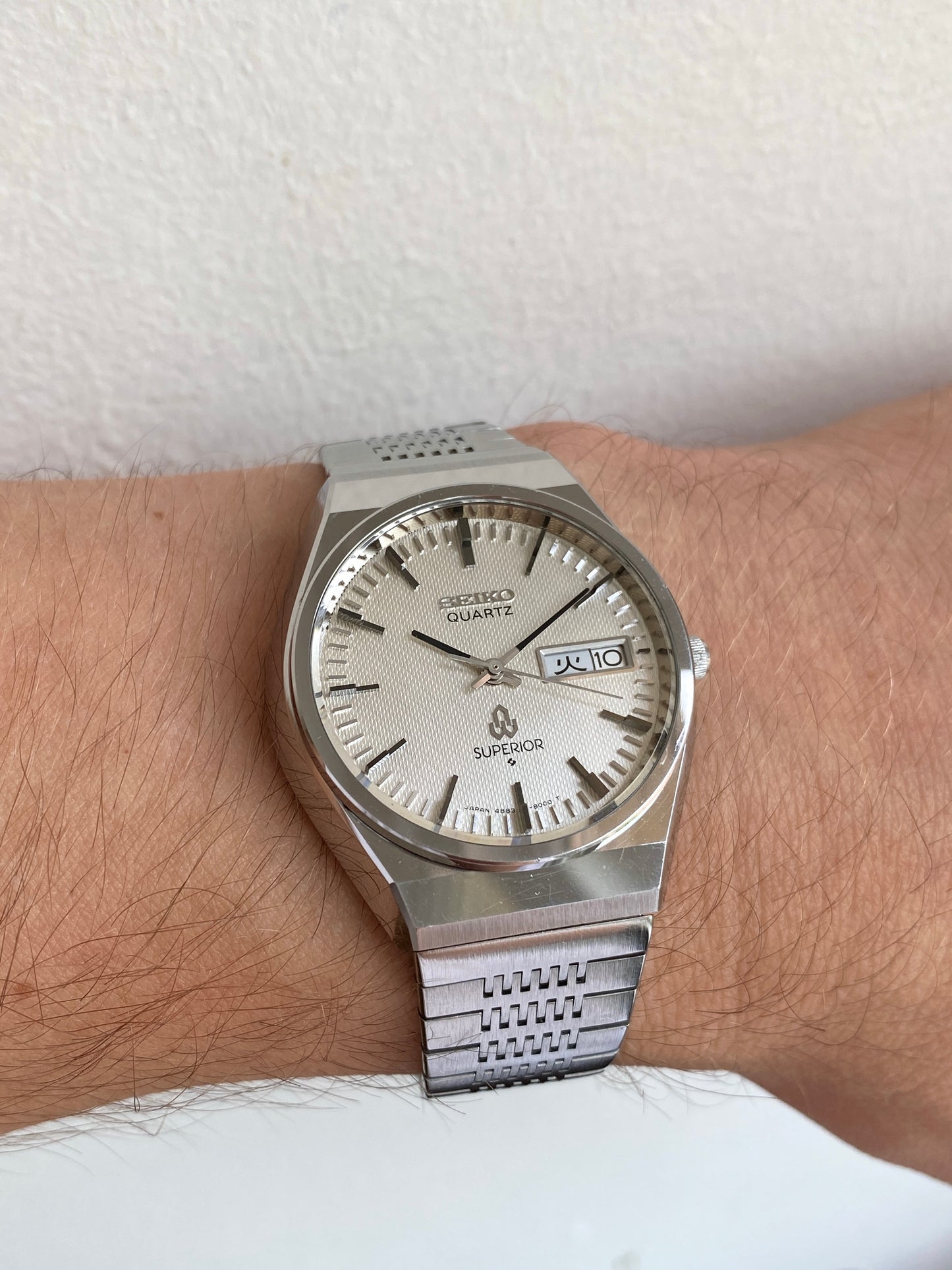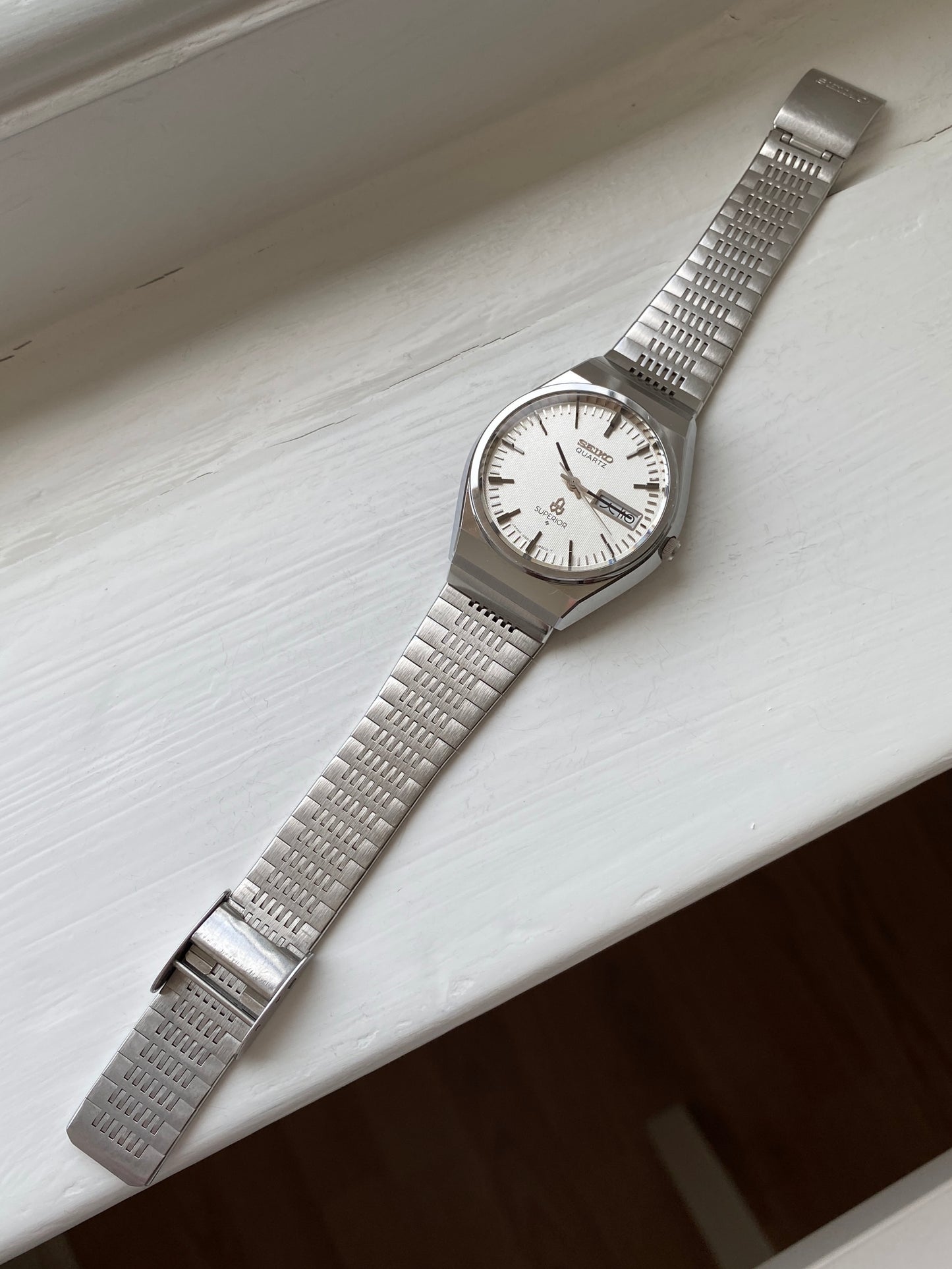Seiko Superior 4883-8100
Seiko Superior 4883-8100
Couldn't load pickup availability
|
Brand |
Seiko |
|
Model |
Superior |
|
Reference |
4883-8100 |
|
Year |
1977 – June |
|
Movement |
Quartz |
|
Extras |
Sapphire crystal |
|
Dial |
Tatami Seiryu |
|
Jewels |
9 |
|
Case |
36mm |
|
Lugs |
18mm |
|
Day/date |
Day and date |
|
Crystal |
Sapphire |
|
Bracelet |
XBB110 | Fits any wrist size |
|
Performance |
± 1 second per month |
|
Box/papers |
Not included |
|
Condition |
Perfect |
The watch
The highly regarded Quartz Superior from 1977. In perfect, unpolished condition with only minor signs of wear. The sapphire crystal remains scratch-free, while the dial is in pristine condition, showing no signs of the discoloration commonly seen on this model. The original bracelet for this model has been fitted, which appears to have been lightly polished but remains in very good condition, complementing the watch's overall impressive condition.
Details
As Seiko's flagship model in 1977, it carried a price tag of 180,000 yen - making it the most expensive Seiko watch that year. Powered by the highly precise 4883 quartz movement, it offered an impressive accuracy of 1 second per month—a level of precision that remains impressive even by today’s standards. This watch showcased Seiko's advanced quartz technology and dedication to high-quality craftsmanship, setting a new standard for accuracy and luxury in the late 1970s.
The quartz crisis
The "quartz crisis," also known as the "quartz revolution," refers to a period in the late 20th century when the Swiss watch industry faced significant upheaval due to the rise of quartz technology. This technological shift began in the 1960s and 1970s, primarily driven by Japanese companies like Seiko.
Quartz watches, which use a battery-powered quartz crystal to keep time, offered several advantages over traditional mechanical watches. They were more accurate, less expensive to produce, and required less maintenance. Seiko, a pioneer in quartz technology, introduced the world's first quartz watch, the Astron, in 1969. This innovation demonstrated that quartz watches could offer precision and affordability, challenging the long-standing dominance of Swiss mechanical watches.
The Swiss watch industry, which had long been revered for its craftsmanship and mechanical expertise, struggled to adapt to this new technology. Many Swiss companies initially underestimated the impact of quartz watches and were slow to innovate. As a result, they faced financial difficulties and market share losses. The quartz crisis led to the decline or bankruptcy of several traditional Swiss watchmakers and forced the industry to undergo significant restructuring.
Ultimately, the quartz crisis reshaped the watch industry, leading to a renewed focus on innovation and a blend of traditional and modern technologies. The Swiss watch industry eventually rebounded by incorporating quartz technology alongside their mechanical expertise.
Important
Customs fees and import duties may apply outside the EU and are the buyer’s responsibility.
